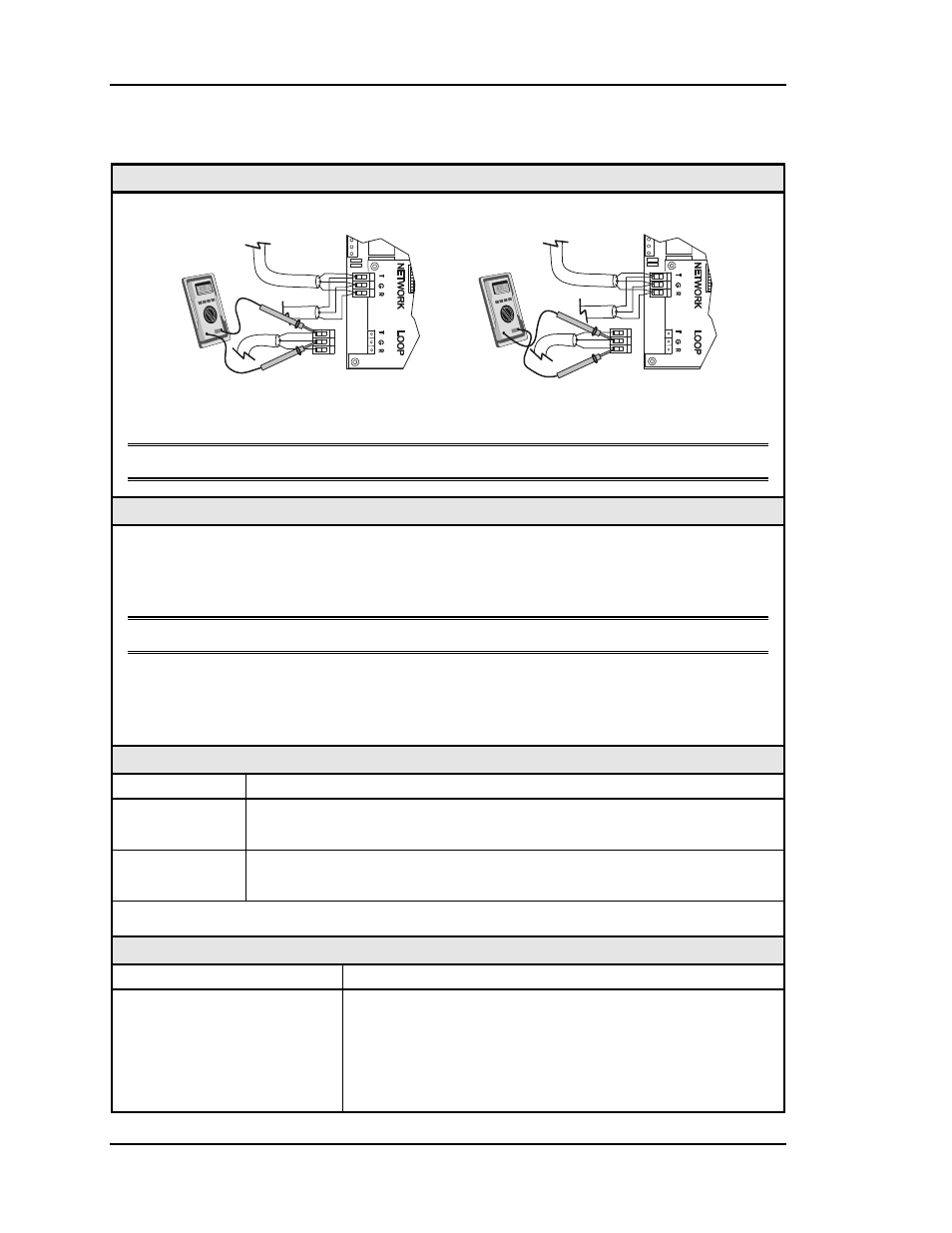7 checking the local loop at the zone manager – Auto-Zone Control Systems Auto-Zone Plus Systems Installation & Operation (Version 03A) User Manual
Page 166

Section 4
Auto-Zone Plus
4-16
Start-Up and Troubleshooting
1.3.7
Checking the Local Loop at the Zone Manager
Diagram
Meter Set To Read DC Volts
T
R
SHLD
+
-
+
-
+2.4 VDC
to
+3.3 VDC
T
R
SHLD
+
-
+
-
+2.4 VDC
to
+3.3 VDC
T - to - G
R - to - G
The indicated values are typical of a normal system. Actual readings may deviate slightly
due to the number of units connected and other system specific factors
Note: These tests assume that the controllers being checked are powered up.
Overview
This is a “quick check” to determine if any of the Zone Controllers or CV Units on a Local
Communications Loop are damaged. Since all Zone Controllers and CV Units will “float”
both of their communications connections at about 3.00 Volts, you can quickly check an
entire loop by unplugging it at the Zone Manager.
Note: Be sure that the loop you are testing does not have a short circuit from T - R.
Damage typically occurs when the communications loop is exposed to excessive voltage, as
may occur during installation, due to wiring errors. The driver chips are socketed on all
boards to facilitate servicing. It is unusual for driver chips to fail during normal operation.
Almost all failures occur due to wiring related problems.
Measurements
Local Loop
Acceptable Range
T – SHLD
2.4-to-3.3 Volts DC (Measured T-G and R-G Voltages should be within
0.1 VDC of each other)
R – SHLD
2.4-to-3.3 Volts DC (Measured T-G and R-G Voltages should be within
0.1 VDC of each other)
Note: Minor variances may not indicate a problem if both tests indicate similar values.
Action
Condition Action
If voltages are outside the
acceptable range or T-G and
R-G readings differ from
each other by more than 0.1
VDC
1. One or more of the attached controllers has a damaged
Comm Driver chip. Locate and replace the driver
chip(s). See "1.3.11 Comm Driver Chip Replacement”.
2. Wiring errors such as "crossed connections", short
circuits, etc.